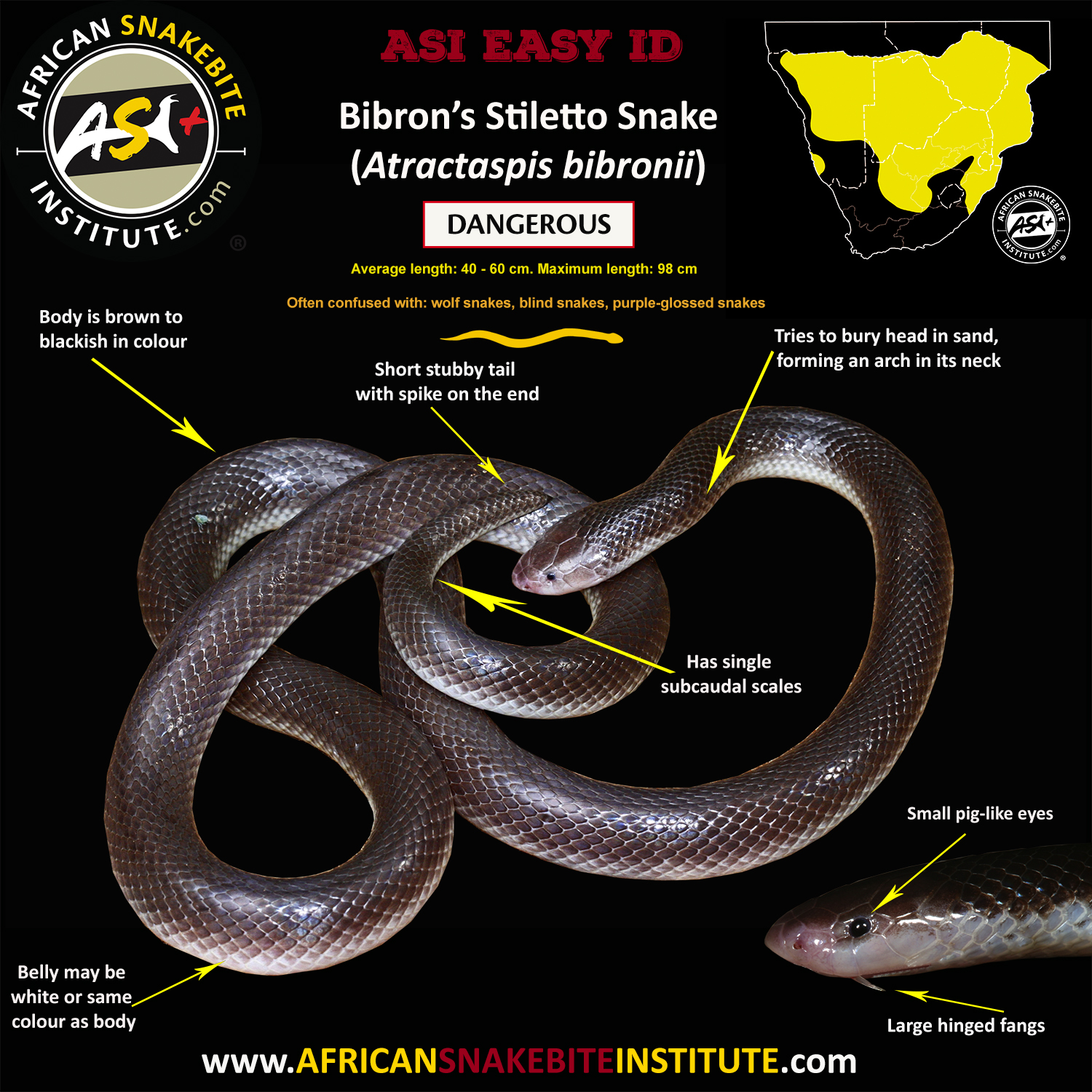The species is endemic to Africa. Adults of A. bibronii average 30–40 cm. The preferred habitats of A. bibronii are fynbos, Namib Desert, karoo scrub, semi-desert, arid savannah, savannah, moist savannah, grassland, lowland forest, and woodland.
By Matt Muir - https://www.inaturalist.org/observations/25940, CC BY-SA 4.0, https://commons.wikimedia.org/w/index.php?curid=92896430
Slang
A. bibronii will eat frogs and small mammals, but its main diet is burrowing reptiles encountered in old termite mounds.
No fatalities have been recorded. However, this is a serious bite and medical treatment will need to be provided.
Sources:
(*) https://en.wikipedia.org/wiki/Atractaspis_bibronii
(*) https://www.africansnakebiteinstitute.com/snake/bibrons-stiletto-snake/
(*) https://www.tyroneping.co.za/stiletto-snake-dont-get-bitten/
The venom of A. bibronii is highly toxic, although it is produced in very small amounts. Bites are common in some areas of Africa. Often, snake handlers are bitten who are unaware that this species is able to bite while being held by its neck. Bite symptoms usually include mild to intense pain, local swelling with occasional blistering.
No fatalities have been recorded. However, this is a serious bite and medical treatment will need to be provided.
Sources:
(*) https://en.wikipedia.org/wiki/Atractaspis_bibronii
(*) https://www.africansnakebiteinstitute.com/snake/bibrons-stiletto-snake/
(*) https://www.tyroneping.co.za/stiletto-snake-dont-get-bitten/

